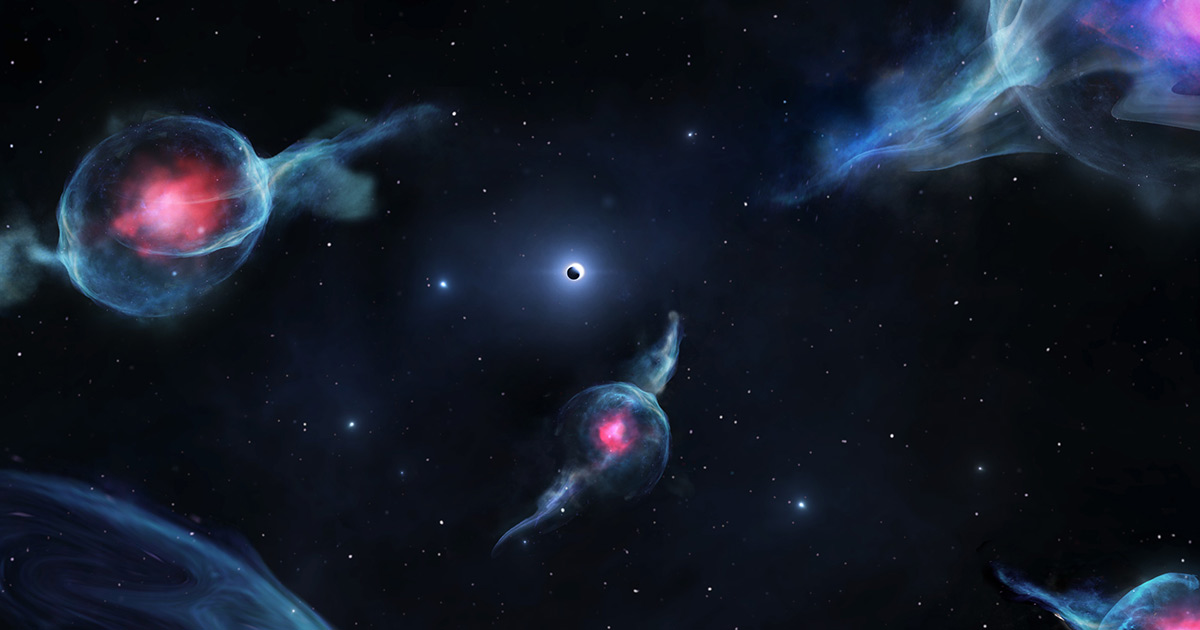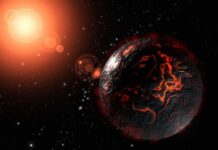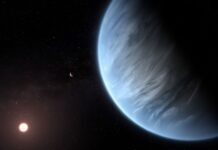A new class of strange shape-shifting space objects was discovered by scientists near the supermassive black hole at the centre of the Milky Way. The authors of the paper that was published in the journal Nature say that these objects look like gas and behave like stars. They are orbiting so close to the black hole that they get stretched under the enormous gravity’s power. When they find themselves farthest away from the black hole, they are returning to a compact, spherical-like form.
The first shape-shifting object (G1) was first noticed in 2005, but it didn’t look very special at the time until it got closer to the black hole which has a mass equivalent to more than 4 million suns. In 2012, another such object (G2) was spotted by German astronomers.
“We had seen it before, but it didn’t look too peculiar until it got close to the black hole and became elongated, and much of its gas was torn apart. It went from being a pretty innocuous object when it was far from the black hole to one that was really stretched out and distorted at its closest approach and lost its outer shell, and now it’s getting more compact again,” said Andrea Ghez, a professor of astrophysics at the University of California Los Angeles and a co-author of the paper.
At first, G2 was thought to be simply a large, diffuse cloud of gas, but when the object survived its close encounter with the black hole, scientists understood that it must have a dense star-like core.
The latest findings reveal that there are at least four additional objects in similar orbits – within a few light-months of the Milky Way’s central black hole. If you think that is not very far, you should know that the Earth is 26,000 light-years away.
Astronomers and astrophysicists are now excited about the possibility of catching one of these objects getting swallowed by the black hole. If that happens they hope to see some “fireworks” as the material eaten by the black hole will heat up and emit copious radiation before it disappears across the event horizon. Of course, it would be also useful in terms of science.
“The centre of our galaxy has a density of stars a billion times higher than our part of the galaxy. The gravitational pull is so much stronger. The magnetic fields are more extreme. The centre of the galaxy is where extreme astrophysics occurs,” explained Ghez.


















